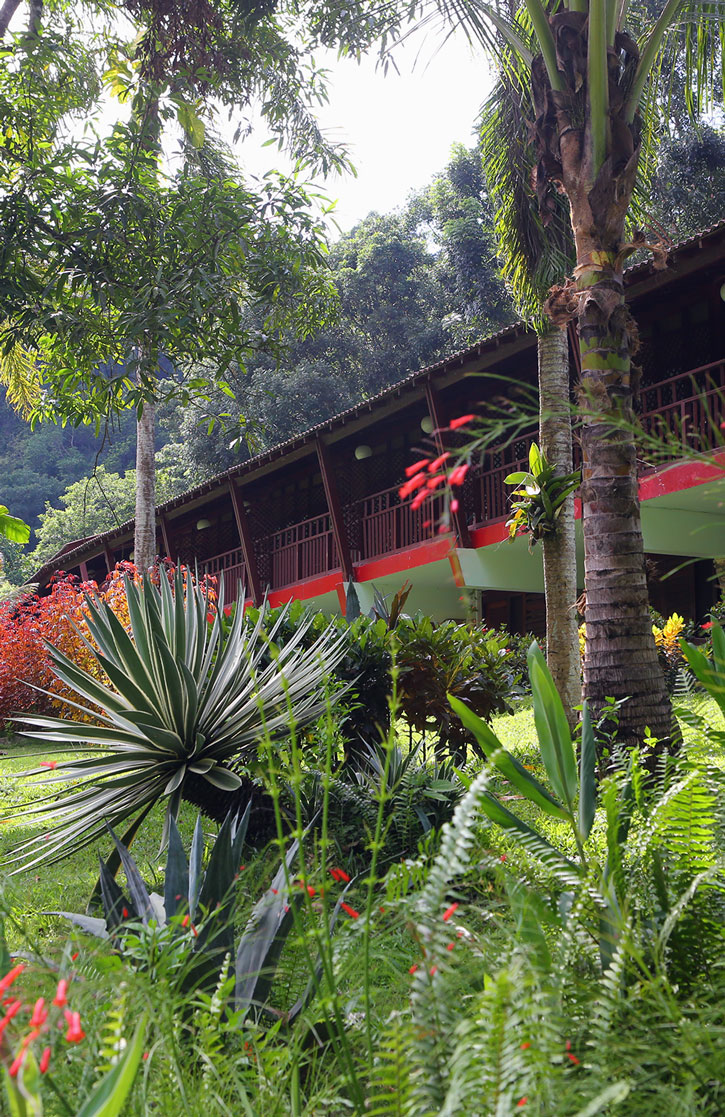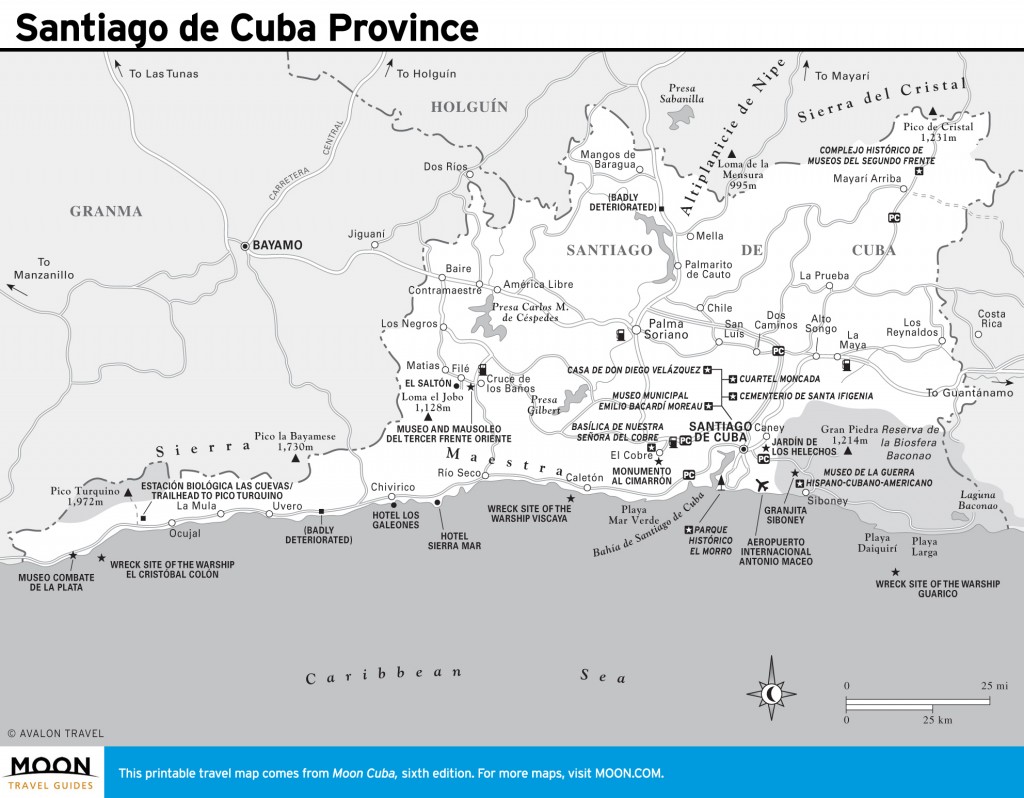You’ll want wheels to reach sites of interest on the outskirts. These include the Cementerio de Santa Ifigenia, where José Martí heads a long list of illustrious figures buried here, and the Parque Histórico El Morro, the castle guarding the entrance to Santiago bay.

Villa El Saltón is a mountain resort that makes a good base for bird-watching and hiking. Photo © Christopher P. Baker.
Use the city as a base for excursions elsewhere in the province.Use the city as a base for excursions elsewhere in the province. A visit to the basilica and pilgrimage site of El Cobre is de rigueur and might be combined with the rugged drive to El Saltón, a mountain resort that is a good base for bird-watching and hiking. For a scenic drive, head west from Santiago to Chivírico, beyond which lies the trailhead to Pico Turquino, Cuba’s highest mountain.The Reserva de la Biosfera Baconao, a short distance east of Santiago, is an eco-reserve only in name. Here, the highlight not to miss is the Museo de la Guerra Hispano-Cubano-Americano, with superb displays recalling the Spanish-American War. Most other sites are rather hokey, but the drive is scenic enough.
Santiago’s entertainment scene is robust. The city’s world-famous Casa de la Trova is still the heartbeat of son in the nation. The yang to the Casa de la Trova’s yin is the open-air Tropicana, second only to Havana’s Tropicana for its sexy Las Vegas-style cabaret. If you’re planning a mid-year visit, consider July, when the city erupts for Carnaval, a marvelous expression of Afro-Cuban rhythms and of Santiagüeros’ let-loose sense of fun.
Santiago is served by trains and buses from elsewhere in Cuba. Options elsewhere in the province are limited.
Santiago sits within a bowl surrounded by mountains, and in summer it can feel like an oven. The rainiest season is May-October. Relief may be found in the mountains and at beaches where breezes ease the heat.

Santiago de Cuba Province
Excerpted from the Sixth Edition of Moon Cuba.